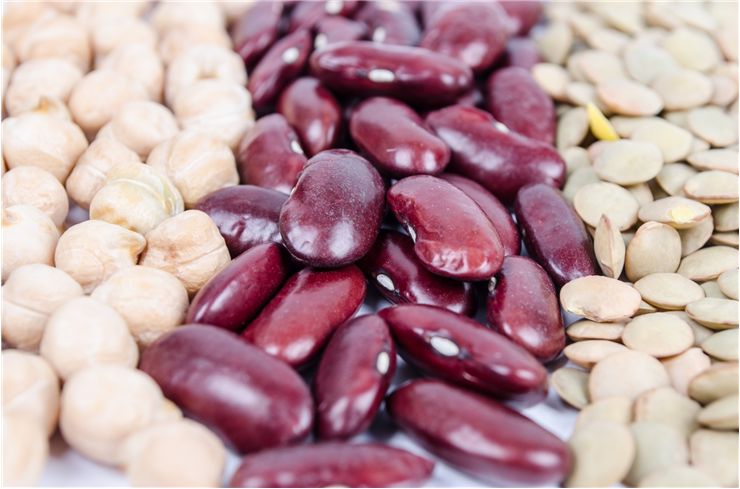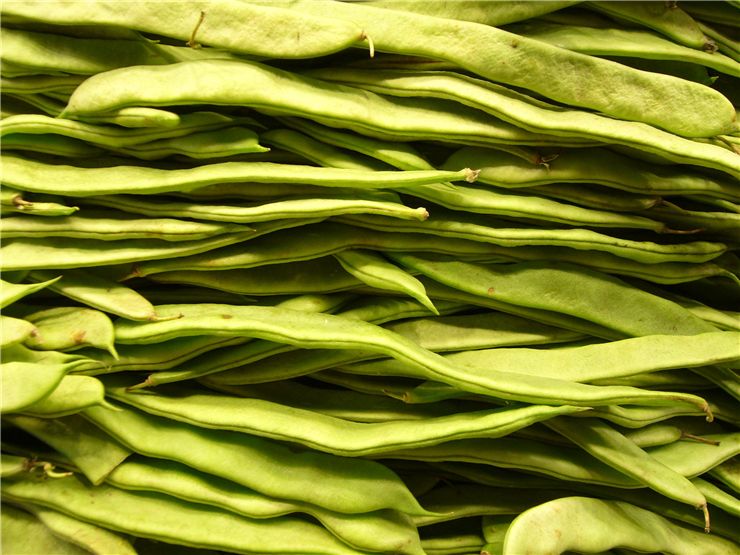History of the Bean - Different Types of Beans
“Bean” is a broad term that we use for a variety of plants from the family “Leguminosae”. We also use the same term for the seeds of those plants which we use for food. At the beginning, only fava bean or broad bean was called bean but in time other plants like common bean and the runner bean got named “bean” as well as some other plants like soybeans, peas, chickpeas, vetches, and lupins and even seed of plants that are in almost no way similar to beans like coffee beans, castor beans and cocoa beans (but they won't be the theme of this text).
Time for planting beans is between late spring and end of the summer. They grow in climbing plants or bushes. Seeds grow in pods that are between 10 and 20 cm long and are at first soft and sweet only to get hard and dry as they mature. Different variants of beans are eaten at the various stages of maturity.

Bean is one of the earliest cultivated plants. The oldest findings and proofs that we used beans for food are 9,000 years old and were found in Thailand. Wild variants of broad beans (fava beans) were gathered in Afghanistan and the Himalayan foothills. Beans were also found in the tombs of the kings of the ancient Egypt where they were left as the food for the departed and their souls in the afterlife. The first cultivated beans appeared 4,000 years ago in the Aegean, Iberia, and transalpine Europe and they were large-seeded broad beans. From the about the same time date beans found in Guitarrero Cave, an archaeological site in Peru which proves that beans appeared practically everywhere and where one of the staple foods of the early peoples. When the first colonists arrived at the New World, Native Americans taught them to grow beans with corn so the bean plants can climb the cornstalks.
Some types of beans cultivated over time are:
- Phaseolus vulgaris (common bean which includes the pinto bean, kidney bean, black bean, green beans, Appaloosa bean etc.)
- Phaseolus acutifolius (tepary bean)
- Phaseolus coccineus (runner bean)
- Phaseolus lunatus (lima bean)
- Phaseolus polyanthus (P. dumosus, in 1995 recognized as a separate species)
- Vicia faba (fava bean or broad bean)
- Vigna aconitifolia (moth bean)
- Vigna angularis (adzuki bean)
- Vigna mungo (urad bean)
- Vigna radiata (mung bean)
- Vigna subterranea (ground-bean or Bambara bean)
- Vigna umbellata (ricebean)
- Vigna unguiculata (cowpea which includes the black-eyed pea, yardlong bean etc.)
- Lathyrus sativus (Indian pea)
- Lathyrus tuberosus (tuberous pea)
- Lens culinaris (lentil)
- Lablab purpureus (hyacinth bean)
- Psophocarpus tetragonolobus (winged bean)
- Cajanus cajan (pigeon pea)
- Mucuna pruriens (velvet bean)
- Glycine max (soybean)
- Cicer arietinum (chickpea or garbanzo bean)
- Pisum sativum (pea)
- Cyamopsis tetragonoloba (guar)
- Canavalia ensiformis (jack bean)
- Canavalia gladiata (sword bean)
- Macrotyloma uniflorum (horse gram)
- Lupinus (lupin)
- Lupinus mutabilis (tarwi)
- Lupinus albus (lupini bean)
- Arachis hypogaea (peanut)
Beans are rich in fibers, protein, complex carbohydrates, folate, and iron but some of them, like red and white kidney beans, also have toxins while they are raw. They have lectin phytohaemagglutinin which can cause poisoning with symptoms of nausea, vomiting, and diarrhea from as little as five raw beans. This toxin can be removed by boiling the beans for at least 30 minutes at 100°C. If the beans are cooked in slow cooker (80°C for a longer time) danger of poisoning can be increased five times and this method of preparation of beans is not recommended.
Bean also contains oligosaccharides (raffinose and stachyose) which are digested by bacteria in the large intestine which results in flatulence-causing gases.

Different places prepare beans in a variety of ways. For instance, in China (more precisely in Sichuan), broad beans are mixed with soybeans and chili peppers and fermented into a paste called doubanjiang. In Dalmatia, a part of Croatia, people prepare a traditional dish made of stuffed artichokes with fava beans and peas. Greeks also cook stew of artichokes and fava beans but while they are still green and in their pods. The Southern United States eat a “Hoppin' John” - a dish made of black-eyed peas and rice. Cuisine called “akara” is traditional in West Africa and the Caribbean. It is prepared by mixing mashed black-eyed peas, salt, onions and peppers and frying the mixture. East Asian adzuki bean is boiled with sugar and made into a sweet paste to be used as an ingredient for many desserts. Mung beans are cooked with coconut milk, sugar and a little ginger and made into a porridge which is a dessert snack called “es kacang hijau”. On the other hand, when the mung bean is made into a fine paste with ginger and salt it is eaten for breakfast.

